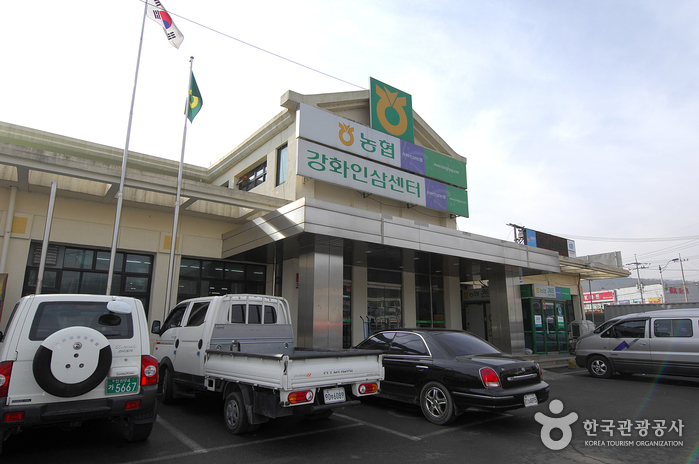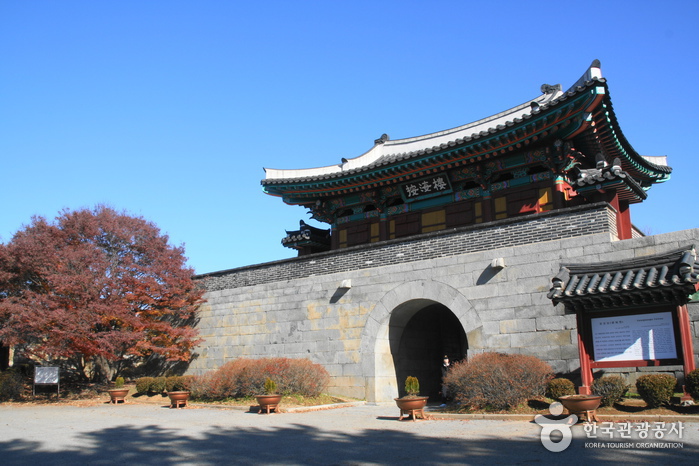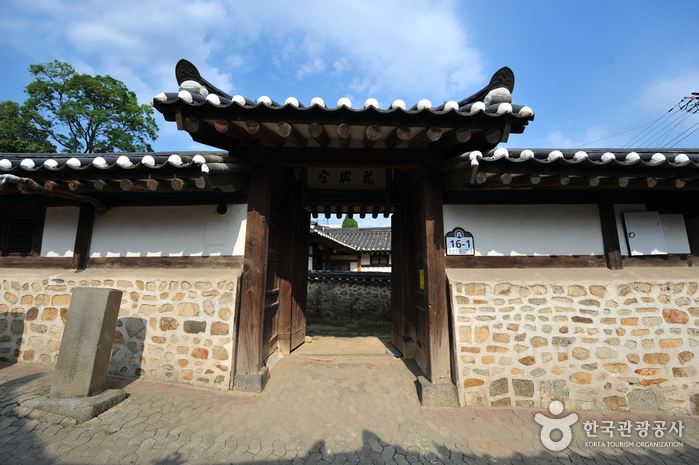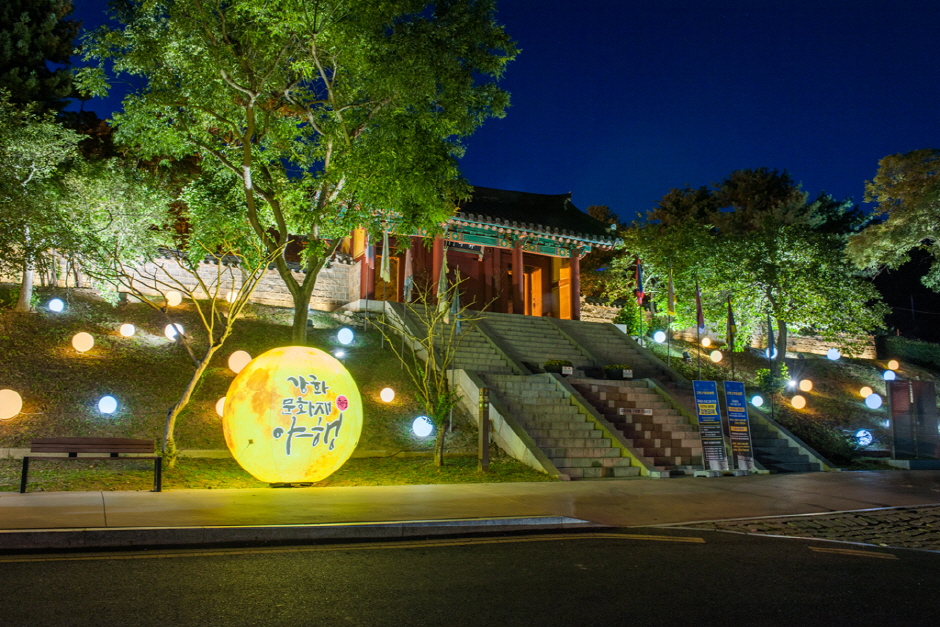Ganghwa Ginseng Center (강화 인삼센터)
0m 37797 2021-05-07
335, Ganghwa-daero, Ganghwa-gun, Incheon
+82-10-9314-3348
The cultivation of Ganghwa ginseng began during the era of King Gojong (A.D. 1232) of the Goryeo dynasty. In 1920, Ganghwado Island was designated a special district for ginseng cultivation. At the onset of the Korean War (1950-1953), the people of Gaeseong, the birthplace of ginseng cultivation, took refuge on Ganghwado Island and began to cultivate ginseng on a large scale, which was the beginning of the production of the famous 6-year-old root of ginseng.
Ganghwado Island has the optimal environment for ginseng cultivation with clay soil, sandy loam, and a cool climate condition influenced by coastal winds. The thick root of Ganghwa ginseng does not have any inside cavity or white interior. This is how Ganghwa became a leading producer of the 6-year-old root, which has a high rate of red ginseng extract, cheonji.
Ganghwa Ginseng Center handles quality ginseng guaranteed in its cultivation, processing, and distribution, owing to the utmost care exerted to provide safe and reliable products.
Ganghwado Island (강화도)
644.0827040560454m 63315 2023-03-24
Ganghwa-daero, Ganghwa-gun, Incheon
+82-32-934-7500
Ganghwado Island, off the west coast, is the fifth largest island in Korea. The island was connected to the mainland in 1970 with the construction of the Ganghwagyo Bridge. Another larger bridge, Ganghwadaegyo Bridge, was built in 1997, making it easier than ever to travel to Ganghwado Island from Seoul and Incheon areas. The island is home to Chamseongdan Altar on top of Manisan Mountain on the southern coast. This is said to be where Dangun Wanggeom offered sacrificial rites to the heavens. Another important item of note on Ganghwado Island is the collection of stone dolmens, a UNESCO-recognized world heritage.
Ganghwado Island has many famous local products, including the medicinally effective Ganghwa ginseng and hwamunseok, a mat woven with flower patterns. Hwamunseok is famous also as a representative traditional Korean product for its intricate handwork and designs.
Daemyeongheon House [Korea Quality] / 남문한옥 대명헌 [한국관광 품질인증/Korea Quality]
682.4010077351146m 0 2021-03-25
7, Nammunan-gil, Ganghwa-gun, Incheon
Daemyeongheon House is a modern hanok building integrating elements of European architecture. Its interior features design that cannot be found in traditional hanok, such as English herringbone-style floorboards and stained glasses. The kitchen has a well-preserved domestic furnace and items in the style of 1930s, exemplifying the unique atmosphere of this modern hanok. Daemyeongheon is also famous for its connection to Kim Gu (pen-name: Baekbeom), a prominent independence activist: When Kim fled to Ganghwado Island about a hundred years ago, Daemyeongheon was the place he stayed for about three months, and also a place where he presided over a village school. Traces of Kim’s stay can still be found in the building.
Daemyeongheon House is made up of three buildings of the main building, a detached building, and an annex. The area that the guests stay in is the annex. The annex has three rooms, a central wooden-floored hall (daecheong), raised floor (numaru), balcony (jjongmaru), and kitchen. The restroom, which is also fitted with a shower booth, is located outside the building. Since reservations are offered to only one group per day, visitors have the house to themselves during their stay. Because of the building’s unique characteristics, guests are prohibited from cooking indoors; instead, guests are provided with a complimentary breakfast, such as bread, tea, coffee, and fruit.
Paid programs on site include tea ceremony, azalea craft on traditional Korean paper, retro-style clothing rental, and photography. Guided tours are offered twice per day at 14:00 and 16:00. The tour takes about 0.5–1 hr and requires a fee of KRW 10,000 (including tea). However, visitors should check the date before their visit, as the guided tour is not available when there are any guests staying in the house.
Shin Arirang (신아리랑)
777.6319607215646m 27051 2024-02-26
4-3 Ganghwa-daero 409beon-gil, Ganghwa-eup, Ganghwa-gun, Incheon
Shin Arirang is a restaurant specializing in jeotguk galbi (salted shrimp and galbi soup), a local food from Ganghwa-gun. Jeotguk galbi is made by boiling pork galbi, pork bones, and vegetables with salted shrimp, offering a savory and rich flavor. Conveniently located near Ganghwa-gun Office, it is easily accessible and popular among locals.
Yongheunggung Palace (용흥궁)
867.1030216121632m 17823 2022-07-27
16-1, Dongmunan-gil 21beon-gil, Ganghwa-gun, Incheon
+82-32-930-3515
Yongheunggung Palace is where King Cheoljong (r. 1849-1863) used to live before his ascension to throne. The chief of Ganghwa County, Jeong Gi-se, enlarged the original residence and named it Yongheunggung (meaning palace of the rising dragon) in the 4th year of King Cheoljong’s reign. Its architectural features include a paljak (traditional Korean half-hipped roof) and supporting columns rendered in Jusimpo style, the column brackets placed only on top of the columns. The palace was built in the tradition of dwelling houses such as the Yeongyeongdang and Nakseonjae houses in Changdeokgung Palace, so the palace buildings give off a simple and plain atmosphere. Within the precincts of the palace are a memorial stone and a monument house indicating that the palace used to be the old home of King Cheoljong.
Night of Ganghwa & Heritage Story (강화 문화재 야행)
965.2711063243775m 368 2021-09-15
Gwancheong-ri. Ganghwa-gun, Incheon
• 1330 Travel Hotline: +82-2-1330 (Korean, English, Japanese, Chinese) • For more info: +82-32-930-3569
Night of Ganghwa & Heritage Story takes place in the city of Ganghwa. There will be a media facade on cultural heritage sites for online viewers as well as a guided tour on bikes for offline visitors.
[Ganghwa Nadeul-gil Course 8] Bird Watching Trail ([강화 나들길 제8코스] 철새 보러 가는 길)
997.9874098057932m 23896 2022-11-11
24, Cheonghadong-gil, Ganghwa-gun, Incheon
+82-32-934-1906
The Ganghwa Nadeul-gil Trails are a collection of walking paths along the coast of Ganghwa Island that connect the watchtowers and and walls of Ganghwasanseong Fortress, as well as royal tombs and other historically significant sites from the Goryeo dynasty that dot the island.
[Ganghwa Nadeul-gil Course 8] Bird Watching Trail
Course 8 stretches over a 17.2 kilometer area between Chojijin Fort and Bunoridondae Fortification. Set along the southern coast of Ganghwado Island, this trail showcases the island's natural beauty and history. It is especially popular in summer when the cool ocean breeze blows and in winter when the migratory birds settle in the mud flats.
[Ganghwa Nadeul-gil Course 7] Setting Sun Trail ([강화 나들길 제7코스] 낙조보러 가는 길)
997.9874098057932m 23723 2022-12-29
24, Cheonghadong-gil, Ganghwa-gun, Incheon
+82-32-934-1906
The Ganghwa Nadeul-gil Trails are a collection of walking paths along the coast of Ganghwa Island that connect the watchtowers and and walls of Ganghwasanseong Fortress, as well as royal tombs and other historically significant sites from the Goryeo dynasty that dot the island.
[Ganghwa Nadeul-gil Course 7] Setting Sun Trail
Course 7 stretches over a 20.8-kilometer-long loop from Hwado Parking Lot to Mud Flat Research Center and back. The trail leads through a tunnel of green leaves before opening out onto the mud flat. The mud flat is one of the world's top five mud flats and presents a beautiful view of the ocean and mountains. Bird-watchers will love the chance to see migratory birds fly through each winter.
[Ganghwa Nadeul-gil Course 6] Birthplace of Hwanam Trail ([강화 나들길 제6코스] 화남생가 가는 길)
997.9874098057932m 23150 2022-08-18
24, Cheonghadong-gil, Ganghwa-gun, Incheon
+82-32-934-1906
The Ganghwa Nadeul-gil Trails are a collection of walking paths along the coast of Ganghwa Island that connect the watchtowers and and walls of Ganghwasanseong Fortress, as well as royal tombs and other historically significant sites from the Goryeo dynasty that dot the island.
[Ganghwa Nadeul-gil Course 6] Birthplace of Hwanam Trail
Course 6 stretches over an 18.8 kilometer area between Ganghwa Bus Terminal and Gwangseongbo Reservoir. The trail passes through fields and forests. Hwanam's hometown is so beautiful, people often say all the flowers that grow in the world can be found here.
[Ganghwa Nadeul-gil Course 5] Gobigogae Pass Trail ([강화 나들길 제5코스] 고비고개길)
997.9874098057932m 23287 2021-02-23
24, Cheonghadong-gil, Ganghwa-gun, Incheon
+82-32-934-1906
The Ganghwa Nadeul-gil Trails are a collection of walking paths along the coast of Ganghwa Island that connect the watchtowers and and walls of Ganghwasanseong Fortress, as well as royal tombs and other historically significant sites from the Goryeo dynasty that dot the island.
[Ganghwa Nadeul-gil Course 5] Gobigogae Pass Trail
Course 5 stretches over a 20.2 kilometer section between Ganghwa Bus Terminal and Oepo Passenger Terminal. This trail is a restoration of the path crossing the low mountain, walked on by past generations when visiting Ganghwa Market.


![Daemyeongheon House [Korea Quality] / 남문한옥 대명헌 [한국관광 품질인증/Korea Quality]](http://tong.visitkorea.or.kr/cms/resource/12/2707012_image2_1.jpg)



![[Ganghwa Nadeul-gil Course 8] Bird Watching Trail ([강화 나들길 제8코스] 철새 보러 가는 길)](http://tong.visitkorea.or.kr/cms/resource/32/1895232_image2_1.jpg)
![[Ganghwa Nadeul-gil Course 7] Setting Sun Trail ([강화 나들길 제7코스] 낙조보러 가는 길)](http://tong.visitkorea.or.kr/cms/resource/22/1895222_image2_1.jpg)
![[Ganghwa Nadeul-gil Course 6] Birthplace of Hwanam Trail ([강화 나들길 제6코스] 화남생가 가는 길)](http://tong.visitkorea.or.kr/cms/resource/27/1895227_image2_1.jpg)
![[Ganghwa Nadeul-gil Course 5] Gobigogae Pass Trail ([강화 나들길 제5코스] 고비고개길)](http://tong.visitkorea.or.kr/cms/resource/21/1895221_image2_1.jpg)
 English
English
 한국어
한국어 日本語
日本語 中文(简体)
中文(简体) Deutsch
Deutsch Français
Français Español
Español Русский
Русский